The sheng can be traced back in its modern form to ancient China. It’s always been a big part of Chinese music, and it’s been blowing up internationally in recent years. In spite of its long and illustrious history, the sheng instrument and its distinctive tone are still relatively unknown. The purpose of this paper is to give a thorough introduction to the sheng instrument by discussing its origins, making, and playing methods in addition to its cultural significance.
What is a sheng in music?
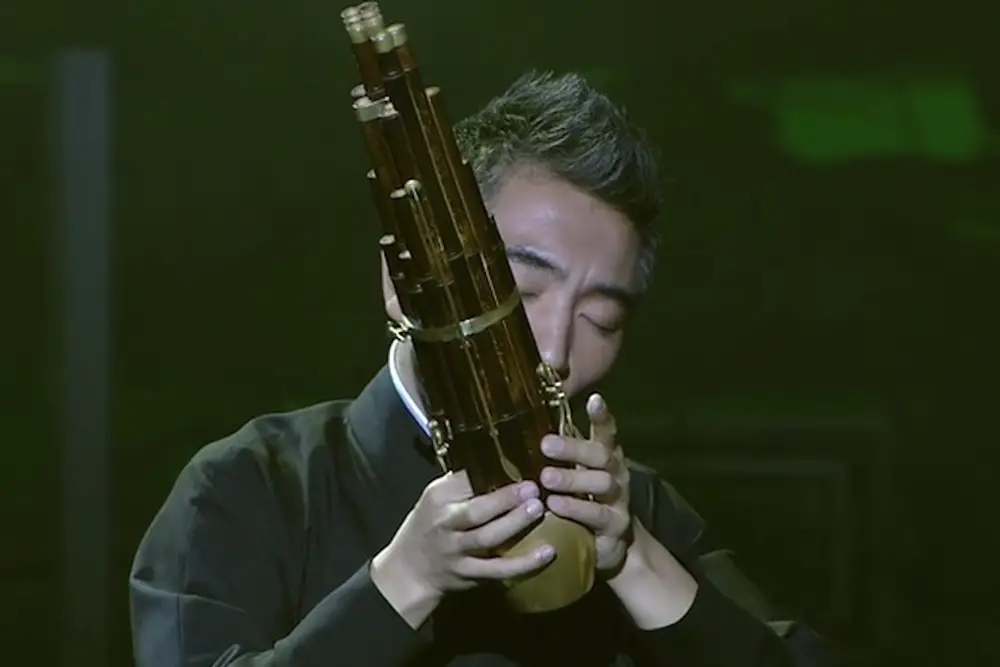
Over three thousand years of history attest to the sheng’s status as an integral part of Chinese musical culture. This wind instrument has a central air chamber with a series of vertical pipes attached to it. The reeds inside the pipes cause a vibrational sound when air is blown through them. The musician blows into a metal mouthpiece located in the central air chamber. A sheng can have anywhere from 17 to 36 pipes, with the largest number being 108.
The sheng produces an unusual sound that defies verbal description. It’s capable of making everything from gentle to boisterous noises. Blowing air into the sheng and then touching the reeds with the tongue and air pressure create the instrument’s distinctive sound. The result is a rich, nuanced sound that is highly prized in classical Chinese music.
Whether it’s opera, folk songs, or classical music, the sheng is a staple in China’s rich musical heritage. In addition to accompanying the erhu and pipa, it is a staple of many Chinese ensembles on its own. The sheng is a traditional Chinese instrument that has found its way into jazz and contemporary music as well.
The sheng is a wind instrument that calls for a special set of skills not needed for other types of wind instruments. The musician’s mouth and breath are the only means by which sound can be produced, and the volume of each note can be adjusted. The musician playing the sheng must use his or her fingers to cover and uncover the holes on the pipes in order to alter the pitch of each note, unlike other wind instruments, which use keys or valves.
The sheng is widely recognized as a representation of China’s musical heritage and is therefore an integral part of the country’s cultural identity. It is widely used in performances of traditional Chinese music and is held in high esteem by both performers and listeners. The sheng’s popularity in the West has grown alongside its incorporation into Western musical styles as the world becomes increasingly interconnected. The sheng is an exotic and intriguing musical instrument that has captivated listeners for centuries.
What kind of instrument is a sheng?
The sheng is an example of what is known as a free reed aerophone, which means that the instrument’s sound is generated by the vibration of reeds housed within the pipes. The sheng’s distinctive sound is produced when air is blown into the instrument and causes the reeds to vibrate, setting off sound waves that travel through the pipes.
In China, the sheng has been around since the Zhou dynasty at the earliest (1046–256 BCE). Historically, it has served as a ceremonial instrument, played only by musicians of the highest social standing. The sheng’s popularity in Chinese music grew over time, and its use eventually spread abroad.
The sheng produces an unusual sound that defies verbal description. It’s capable of making everything from gentle to boisterous noises. Blowing air into the sheng and then touching the reeds with the tongue and air pressure create the instrument’s distinctive sound. The result is a rich, nuanced sound that is highly prized in classical Chinese music.
The sheng is a wind instrument that calls for a special set of skills not needed for other types of wind instruments. The musician’s mouth and breath are the only means by which sound can be produced, and the volume of each note can be adjusted. The musician playing the sheng must use his or her fingers to cover and uncover the holes on the pipes in order to alter the pitch of each note, unlike other wind instruments, which use keys or valves.
What are the characteristics of sheng?
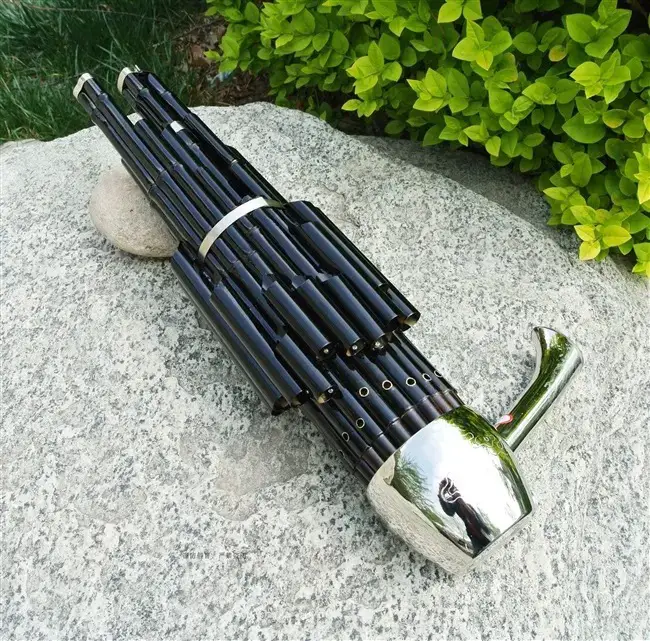
In traditional Chinese music, the sheng takes center stage as a one-of-a-kind and ancient instrument. It has played a significant role in the evolution of traditional Chinese music due to its unique sound and physical characteristics. Key features of the sheng include the following:
- The sheng produces a sound that is both unique and elusive to pin down in words. This sound is created by blowing into the metal mouthpiece, which sends the air to the central chamber and on to the individual pipes. The reeds inside the pipes make a vibrating sound that can be anywhere from soft and mellow to loud and raucous.
- The sheng is a highly adaptable instrument that can be used to play both melody and harmony. Its many pipes can be played singly or in harmony to produce a wide range of tones and textures.
- There are neither keys nor valves on the sheng, in contrast to other wind instruments like the flute or saxophone. Instead, the pitch of each note is adjusted by the musician covering and revealing holes in the pipes with their fingers. This makes playing the sheng a difficult instrument that calls for a great deal of skill and dexterity.
- The sheng has a long and illustrious history in China, stretching back more than three thousand years. As a form of art, music has served many functions, from opera to folk music to rituals. Many Chinese ensembles wouldn’t be complete without the sheng, as it is commonly used to accompany other instruments like the erhu and pipa.
- Cultural Importance: The sheng is a well-known representation of China’s long and distinguished musical tradition. It is widely used in performances of traditional Chinese music and is held in high esteem by both performers and listeners. Because of its one-of-a-kind tone and design, it has captivated listeners all over the world for centuries.
what the sheng instrument is made of
The sheng is a bamboo-and-metal acoustic stringed instrument used in classical Chinese music. Sound is generated by the vibration of reeds inside the pipes; thus, the device is classified as a free-reed aerophone. Several bamboo pipes of varying lengths are attached to the sheng’s central chamber. When air is blown into the pipes, it causes the reeds at the ends to vibrate, creating sound.
The sheng’s main chamber is also metal, usually brass or copper. To blow air into the instrument, the mouthpiece is connected to this chamber. A thin metal plate, known as a reed, is attached to the mouthpiece, which is typically made of metal or plastic. Sound is produced by blowing air into the mouthpiece, which causes the reed to vibrate, and the resulting sound waves travel through the central chamber and out the individual pipes.
The sheng pipes are constructed from bamboo, a strong yet flexible material. Pipes are typically made from halves or quarters of bamboo that have been specifically chosen for their size, shape, and thickness. The brass or steel reed that rests at the end of each bamboo pipe is affixed there with great care. When air is blown into the pipe, it causes the reed to vibrate, producing a sound that is distinctive to that pipe.
The sheng’s aesthetic value is further enhanced by its numerous decorative elements. These include tassels and intricate carvings. Silk, embroidery, and lacquer are common materials for these ornamental touches, which are used to give the instrument its own look.
Construction:
The sheng is a complex and intricate musical instrument with a distinctive appearance and sound. Its construction involves a number of different materials and components, each of which contributes to its unique sound and performance capabilities.
The main body of the sheng is typically made from a gourd or a wooden frame, which is divided into two chambers: the air chamber and the sound chamber. The air chamber is located at the bottom of the instrument and contains a set of free reeds, while the sound chamber is located at the top and is used to amplify and shape the sound produced by the reeds.
The reeds themselves are made from brass or steel and are arranged in a series of pipes or tubes that extend outward from the air chamber. These pipes are typically arranged in two rows, with one row containing the “blowing” pipes, which are used to blow air into the instrument, and the other row containing the “sounding” pipes, which produce the actual sound.
One of the most distinctive features of the sheng is the use of a wind chamber, which is located above the air chamber and helps to regulate the flow of air into the instrument. The wind chamber is typically made from bamboo or wood and contains a number of small holes or openings that allow air to flow in and out of the instrument.
In addition to the main body and reeds, the sheng also includes a number of other components that help shape and control its sound. These include the mouthpiece, which is used to blow air into the instrument, as well as a variety of decorative elements such as tassels, silk strings, and ornamental designs.
What is the sheng instrument used for
The sheng is a versatile and important instrument in traditional Chinese music. It is used in a wide range of musical contexts, from traditional folk music to contemporary compositions. Here are some of the common uses of the sheng in traditional Chinese music:
Solo Performance: The sheng is often played as a solo instrument, showcasing the musician’s technical skill and creativity. Solo performances typically involve improvisation and virtuosic playing as the musician explores the full range of the instrument and creates complex and intricate melodies.
Ensemble Performance: The sheng is frequently used in Chinese ensembles, playing a crucial role in creating the harmonies and textures of the music. It is often paired with other instruments such as the erhu, pipa, and guzheng, and can play both melodic and harmonic parts.
Opera: The sheng is a common instrument in Chinese opera, where it is used to provide accompaniment to the singers and actors. It is often used to signal changes in mood or emotion and can create a range of sounds, from delicate and gentle to powerful and dramatic.
Ritual Music: The sheng has a long history of use in ritual music in China. It is often played during religious ceremonies and festivals, providing a spiritual and ceremonial element to the music.
Contemporary Music: The sheng has also been used in contemporary music, where it has been incorporated into a wide range of musical styles and genres. It has been used in everything from avant-garde compositions to pop and rock music and has been embraced by a new generation of musicians and composers.
Sheng instrument history

The sheng is a traditional Chinese stringed instrument that has been played for thousands of years. The earliest evidence of this wind instrument dates back more than three thousand years. Historically, the sheng has been an integral part of religious and cultural celebrations.
The earliest iterations of the sheng looked very different from modern examples. Most commonly, they were crafted from gourds or bamboo, and their design was much more basic than that of the modern sheng. Time and refinement brought about the modern sheng, with its distinctive metal and bamboo construction and complex sound.
The sheng rose to prominence as an instrument of choice for the aristocracy and the royal court during the Tang Dynasty (618–907 AD). It was used frequently in ceremonial music and entertainment because of its high level of sophistication. Because of the widespread cultural exchange that occurred between China and its neighbors during the Tang Dynasty, the sheng made its way to Korea and Japan.
After its introduction during the Song Dynasty (960–1279 AD), the sheng quickly established itself as a crucial component of Chinese musical theory. Musicians and music theorists began to investigate the sheng’s potential by trying out different tunings and playing styles. The “silk and bamboo” ensemble, which incorporated stringed and wind instruments, owes much of its development to the sheng.
Throughout the Ming (1368–1644) and Qing (1644–1911) dynasties, the sheng was an integral part of both traditional and popular music in China. But it also ran into trouble when Western trumpets and accordions made their way into China. Despite this, the sheng maintained its position as a vital component of Chinese music, and it is still played frequently in both classical and modern styles.
When was sheng invented
Exactly where the sheng was first used is a mystery, but it is thought to date back more than three thousand years to ancient China. The wind blowing through bamboo pipes or reeds, which were used for a variety of purposes in ancient China, has been theorized as the inspiration for the sheng.
A musician playing what appears to be a bamboo instrument with multiple pipes or reeds is depicted on a bronze vessel from the Western Zhou Dynasty (1046-771 BCE), making it the earliest depiction of an instrument that resembles the sheng. Whether or not this instrument was a sheng or something similar is unknown.
The sheng as we know it today is the result of hundreds of years of refinement and evolution in both its build and performance style. The sheng is often said to have flourished during the Tang Dynasty (618–907 AD), because it was then that the instrument became widely played in the royal court and among the aristocracy.
The sheng is an ancient instrument that has maintained its significance in Chinese music, finding frequent use in both classical and modern settings. The instrument’s continued popularity is a tribute to its singular tone, distinctive appearance, and cultural significance in China.
Where did Sheng originate from?
Over the course of more than three thousand years, the sheng has served as an integral part of Chinese musical culture. The provinces of Henan and Shaanxi, located in central China, are thought to be its birthplace because of their abundance of bamboo and reed resources and their proximity to early Chinese civilizations.
Although its ancestry is shrouded in mystery, the sheng is widely believed to have developed from simpler bamboo instruments employed in ancient China for a wide range of purposes, including but not limited to ritual, celebration, and even political discourse. The sheng was likely developed as a means of making a more complex and flexible wind instrument capable of producing a wider variety of sounds and tones.
Over time, the sheng’s popularity grew, and it eventually became standard fare in traditional Chinese music, played all over China. It was used for everything from opera and the court to religious celebrations and festivals.
The sheng is not only popular in China, but it has also spread to other Asian countries like Korea and Japan, where it has been infused with the local musical traditions and given its own distinct flavor. The sheng has maintained a significant role in both classical Chinese music and its modern and experimental offshoots.
The ingenuity and creativity of the sheng’s early inventors and innovators, as well as the instrument’s long and storied history, are reflected in the sheng’s development and the history of Chinese music and culture more broadly. The sheng’s unique and entrancing sound, as well as its cultural significance in China and beyond, have ensured the instrument’s continued popularity and use even in the modern era.
Sheng’s instrument symbolizes
The sheng is a traditional Chinese stringed instrument that represents Chinese culture and music internationally as a symbol of both. The sheng’s enduring popularity and significance in Chinese culture can be attributed in large part to the myriad of cultural associations and meanings inspired by the instrument’s distinctive sound and physical characteristics.
Nature and the natural world are among the most common symbols associated with the sheng. The sheng is made from bamboo and reeds, and its sound is often compared to the sound of the wind. Qi, also known as life energy, is thought to permeate all living things and is considered a fundamental force in the universe. The sheng’s sound is interpreted as a manifestation of the earth’s natural energy and vitality, and the breath-based playing technique is thought to embody the flow of qi.
The sheng is also associated symbolically with the human voice and the range of human emotion. The sheng is frequently used as an accompaniment instrument for singing because its sound is thought to reflect the expressive range of the human voice. The sheng’s versatility in producing happy and sad sounds makes it a great instrument for expressing a wide range of human emotions. The sheng’s dual nature as a wind and percussion instrument is symbolic of the harmony between yin and yang, the balance of opposing forces in the universe.
Symbolically, the sheng is linked to important moments in Chinese history. For thousands of years, the sheng has been an integral part of Chinese music and has been celebrated in numerous works of literature, poetry, and art. There is also a connection between the sheng and the field of study known as Chinese cultural studies (Guo Xue), which places an emphasis on learning about and appreciating classical Chinese thought and practice.
Last but not least, the sheng is a symbol of contemporary China’s commitment to promoting and preserving its cultural traditions. The sheng has been featured in numerous performances and cultural events around the world in recent years, as it is increasingly recognized as an important part of Chinese culture. The instrument’s continued use and popularity attest to the enduring power and significance of this ancient instrument, and its versatility, expressiveness, and unique sound make it ideal for representing Chinese music and culture abroad.
Sheng instrument story
There’s a lovely myth about how the sheng came to be created.
There once was, so the tale goes, a music-loving empress in ancient times. She happened upon the mythical phoenix one day and was treated to the bird’s enchanting song. She was completely enraptured by the beautiful song, but the bird took off before she could reach it.
When the empress kept thinking about the bird and its song, she became so upset that she stopped eating. The emperor wanted to make her feel better, so he had artisans all over the country create an instrument that sounded like a legendary bird. Soon after, they fashioned an instrument that resembled the phoenix and given it the name sheng. Fengming, which literally translates to “the phoenix singing,” was the name given to the music created by the sheng.
After the Duke of Zhou established the system of rites and music in the early Western Zhou Dynasty, the sheng became a common instrument for various ceremonial occasions. Frequently, the sheng was the featured instrument, with supplementary instruments serving primarily for aesthetic purposes.
The Warring States period philosopher Mozi, who spoke for the Mohist School, wrote a book titled “Mozi” in which he lamented the futility of music. But he had a strong personal preference for the sheng, which is indicative of the widespread acclaim the instrument enjoyed at the time.
The sheng has been widely used in a wide variety of musical contexts because it is a popular instrument among both the affluent and the working class. Ethnic minorities in southern China, including the Dong, Miao, and Yi, continue to use the sheng as a primary instrument in their music today.
夜夜笙歌”Nightly sheng and song”: Chinese Pinyin[ yè yè sheng ge] Originally used to describe the luxurious and depraved lifestyle of emperors and high officials, “nightly sheng and song” is now used to describe a person’s decadent and indulgent life.
笙歌鼎沸 “The sheng and song are lively and bustling.” Chinese Pinyin [shng g ding fèi] means to describe the sound of music and singing as very lively.
凤管鸾笙”Fengguan, Luan, and Sheng”: Chinese Pinyin [fèng guan luán sheng] The beautiful name for the music of Sheng and Xiao.
Playing Techniques:
There is a specific set of skills needed to play the sheng and achieve its distinctive sound. The most fundamental method involves blowing air into the mouthpiece and covering or uncovering the holes on the pipes with the fingers to create different notes.
Sheng players often use a technique called vibrato, in which they rapidly and repeatedly alter the pitch of a note to create a pulsing sound. The player’s lips can apply more or less pressure to the mouthpiece to create a vibrato effect.
Tonguing is a technique that helps musicians articulate their notes by cutting off airflow with their tongue. These staccato notes and rhythmic patterns are typical of fast and intricate pieces.
Glissando, in which notes are swiftly and smoothly transitioned between each other, can also be produced on the sheng. To create this effect, the player must move their fingers rapidly across the pipes’ openings while keeping the airflow constant.
The sheng also has the ability to produce harmonics, which are overtones with a higher frequency than the fundamental note. Blowing a steady stream of air with the tongue in a particular position inside the mouth produces harmonics.
Finally, by altering the air pressure and flow through the sheng’s mouthpiece, a variety of breathy, airy, and growling effects can be achieved. In slower, more lyrical pieces, these effects can help performers convey the full range of their emotions.
The sheng is a wind instrument that calls for a special set of skills not needed for other types of wind instruments. The musician’s mouth and breath are the only means by which sound can be produced, and the volume of each note can be adjusted. The sheng’s tonal palette is broad, spanning from gentle to boisterous.
What instruments are similar to the sheng
There is no equivalent instrument in Western or other non-Chinese musical traditions to the sheng. Contrarily, there are a number of other instruments that share some characteristics with the sheng, including:
- The harmonica is a portable wind instrument that is played by blowing through a set of reeds. Harmonica players, like sheng players, can alter the instrument’s pitch and tone by changing the pressure of their breath.
- The accordion is a large, bellows-operated wind instrument played by depressing and expanding the bellows in time with the pressing of keys or buttons. The accordion, like the sheng, creates sound through the vibration of reeds, and the player adjusts the instrument’s pitch and tone through the use of bellows.
- The melodica is a portable, pocket-sized keyboard instrument that is played by blowing air through a mouthpiece. Like the sheng, the melodica makes music via vibrating reeds, and the player adjusts the instrument’s pitch and tone by changing the intensity of their breath.
- The pipe organ is an enormous keyboard instrument that generates sound by forcing air through a series of pipes. The sheng and the pipe organ have similar tonal qualities because they both use reeds to create a sustained, ethereal sound.
- When playing the Indian harmonium, the player pumps air through bellows and at the same time presses keys on a keyboard. The Indian harmonium, like the sheng, makes music through the vibration of reeds, and the player adjusts the instrument’s pitch and tone by manipulating the bellows.
In spite of their shared resemblance to the sheng, each of these instruments has its own distinct tone and method of play. The sheng is still widely used in orchestral and ensemble settings, marking it as a distinctive and essential part of Chinese musical culture.
Sheng instrument vs. dizi flutes
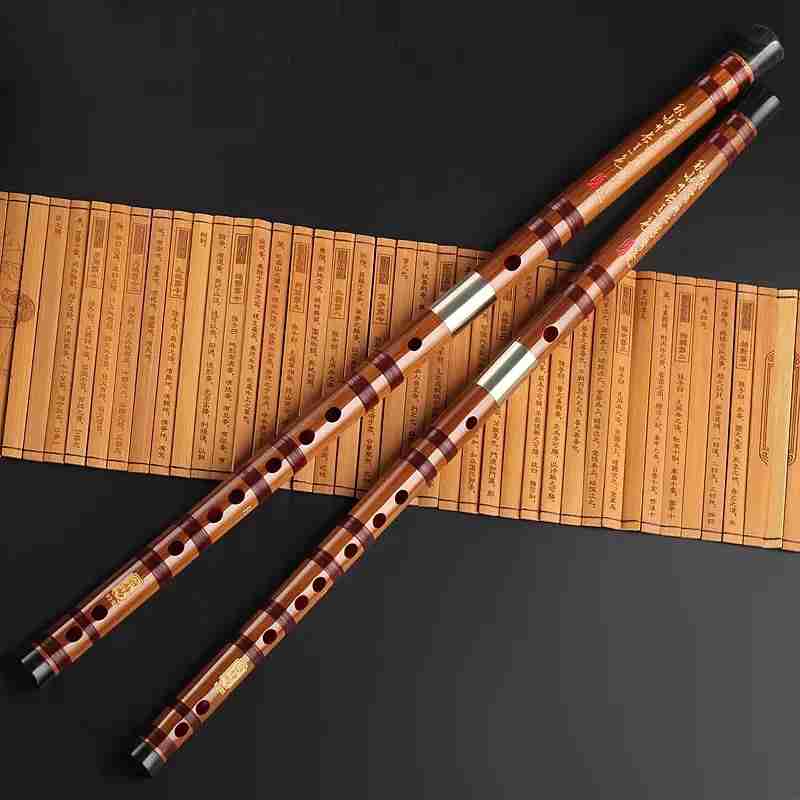
The sheng and dizi are both traditional Chinese wind instruments that share some similarities but also have distinct differences.
The sheng is a free-reed instrument that produces sound by blowing air through a set of reeds inside the instrument. It has a range of up to four octaves and can produce both melody and harmony. The Dizi, on the other hand, is a side-blown bamboo flute that produces sound by blowing across a hole on the side of the instrument. It has a range of about two octaves and is primarily used for melody.
One of the main differences between the sheng and the dizi is the playing technique. The sheng requires the player to blow air into the instrument while also using their hands to manipulate the reeds to produce different pitches and timbres. In contrast, the dizi is played by blowing air across the hole and using fingerings to change the pitch.
Another difference is the sound produced by each instrument. The sheng has a rich and complex sound due to its ability to produce both melody and harmony simultaneously, while the dizi has a simpler and more focused sound that is ideal for solo melodies.
In terms of construction, the sheng is a much larger instrument than the dizi and is made of metal or bamboo pipes that are mounted on a wind chest. The dizi is made entirely of bamboo and is typically shorter than the sheng.
Despite their differences, both the sheng and dizi are important instruments in traditional Chinese music and have been used for centuries in various musical genres. They are also popular in contemporary music and can be heard in a range of different musical styles.
Sheng instrument vs. xiao flutes

The sheng and xiao are both traditional Chinese wind instruments, but they differ in several ways.
Firstly, the sheng is a free-reed instrument, while the xiao is a flute. The sheng produces sound by using a series of metal reeds that vibrate when air is blown through them, while the xiao creates sound through the vibration of the air column inside the instrument.
Secondly, the sheng has a wider range of notes than the xiao. The sheng can play up to 37 notes, while the xiao typically has a range of around two octaves.
Thirdly, the playing technique of the sheng involves both hands, as the player must use one hand to control the airflow and the other to play the melody. In contrast, the xiao is played with just one hand while the other hand holds the instrument steady.
Fourthly, the sheng has a louder and more piercing sound than the xiao. This is due to the nature of the instrument’s reeds and the fact that it has a larger resonating chamber. The xiao, on the other hand, has a more mellow and gentle sound.
Finally, the sheng is often used in traditional Chinese orchestral music, while the xiao is often used in solo and chamber music contexts.
In summary, while both the sheng and xiao are important to wind instruments in Chinese music, they differ in their sound production, range, playing technique, and typical musical contexts.
Sheng instrument vs. Yu instrument
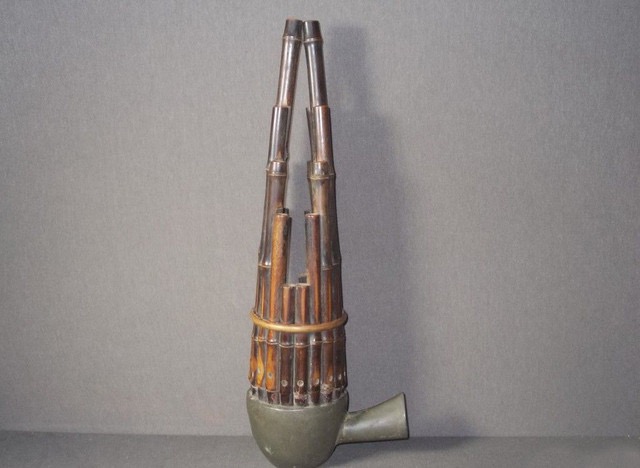
Both the Yu and the Sheng are ancient Chinese instruments with free reeds and multiple bamboo pipes. While they share some similarities, there are also notable distinctions.
The primary distinction between the two instruments is in how they are played. Although both the Sheng and the Yu can produce multiple tones at once, the Yu is played in a melodic fashion with single lines of sound. Construction-wise, the Yu is typically bigger and bulkier than the Sheng, and its wind chest may be crafted from bamboo, wood, or a gourd.
In ancient China, the yu was a staple instrument of the court orchestra and would often be played by multiple musicians at once. The sheng, on the other hand, is still used in traditional Chinese music and has even found its way into some forms of modern music.
There is also a distinction in playing technique between the two instruments. While both the Yu and the Sheng use free reeds, the Yu’s more prominent and substantial reed necessitates more breath support and control from the player. For the Yu, you’ll need a different embouchure and airflow pattern than what’s required for the Sheng.
There are some similarities between the Yu and the Sheng, such as their use of free reeds and multiple bamboo pipes, but there are also significant differences in their playing styles, construction, and techniques. The Yu has fallen out of use, but the Sheng is still widely used in traditional Chinese music.
Sheng instrument vs. bassoon instrument
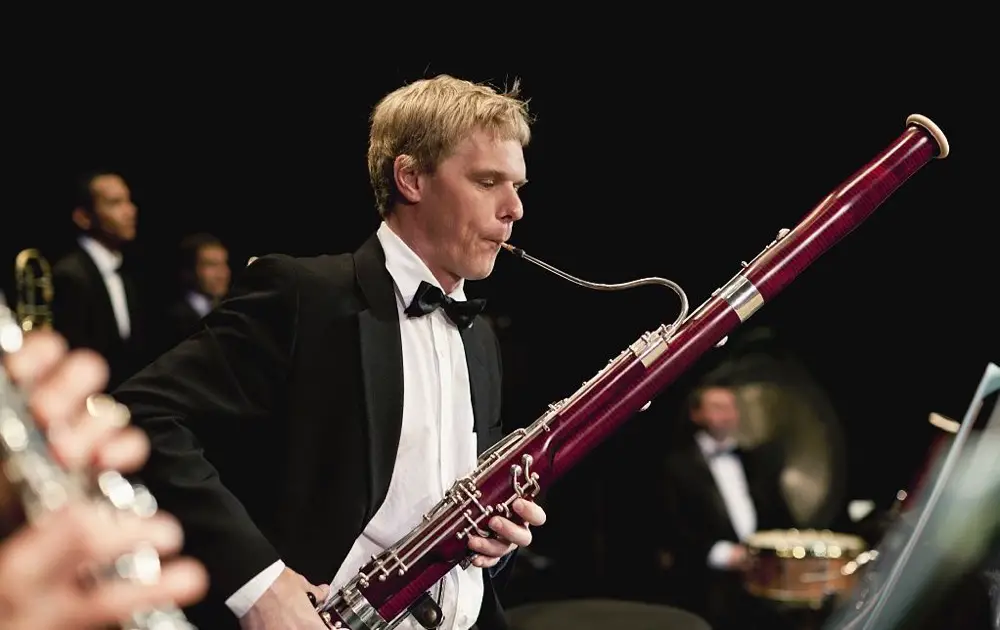
Though both the sheng and the bassoon are reed-based woodwind instruments, these two are very different from one another.
One major difference is that the bassoon has its roots in Europe’s Baroque era, while the sheng dates back to ancient China. The sheng is a bamboo instrument with a sound box and several pipes, each of which can hold a separate reed. The bassoon, on the other hand, is a wooden instrument that is double-reeded and has a long, curved shape.
The sheng’s distinctive sound is rich and airy, and it is sometimes described as having an ethereal or otherworldly quality. It is primarily used to play traditional Chinese music and has a limited range as a result. The bassoon, in contrast, produces a rich, resonant sound across more than three octaves. It is played in a wide variety of musical contexts, from full orchestral works to chamber ensembles to solo recitals.
The two instruments have different playing techniques as well. Sound is produced on the sheng by blowing into the mouthpiece and pressing various keys. The bassoon, on the other hand, calls for a more nuanced approach to playing, involving embouchure, breath control, and finger movements to create a wider range of tones and accents.
Another difference is in the role that the instruments play in their respective cultures. As an instrument steeped in Chinese history and tradition, the sheng is frequently featured in classical opera and other forms of ceremonial music. While the bassoon certainly has its place in Western classical music, it cannot compare to the sheng in terms of cultural significance.
Although both the sheng and the bassoon are reed instruments, there are significant differences between the two in terms of construction, tone, dynamic range, playing style, and cultural significance.
Sheng instrument VS Pan flute
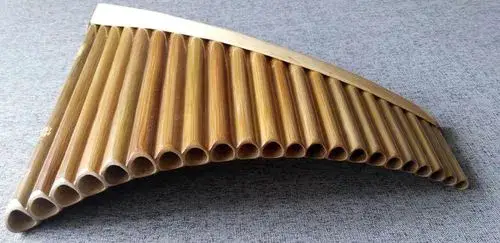
Both the sheng and the pan flute are examples of wind instruments, but these two instruments are very different from one another in terms of their build, playing style, and cultural significance.
The sheng is a traditional Chinese wind instrument that uses multiple bamboo pipes, each of which holds a free bamboo reed and is mounted in a wind chest made of bamboo or other materials. The reeds are vibrated by the player’s air as they blow into the mouthpiece. The sheng is used in ensembles, orchestras, and solo performances across a wide range of Chinese musical traditions due to its ability to produce a wide range of harmonious tones simultaneously.
Conversely, the pan flute is a set of interconnected hollow tubes of varying lengths, usually made of bamboo, wood, or metal, with open ends. The tubes are lined up next to one another and secured at each end. The player makes sound by blowing across the open ends of the tubes, which causes the column of air inside to vibrate. Only one note can be played at a time, but melodies can be created through the player’s manipulation of the instrument’s pitch and tone with techniques like tonguing and vibrato.
When it comes to its cultural significance, the sheng is firmly established in ancient Chinese tradition. It is commonly used at festivals, banquets, and other cultural celebrations to represent China’s rich musical heritage. The pan flute, on the other hand, has a richer cultural history due to the fact that it has regional variants throughout the world, from South America to Africa and Europe.
The sound of the sheng is crisp, clear, and resonant, while the sound of the pan flute has a more subdued yet still pleasant quality to it. The sheng is distinguished from the pan flute, which is typically employed for melodic lines, by its ability to produce harmonies.
In conclusion, although both the sheng and the pan flute are wind instruments, these two are very different from one another in terms of their physical make-up, playing techniques, cultural significance, and sound. Comparatively, the pan flute has a more varied cultural background and is typically used for melodies, while the sheng has a long history of use in a variety of musical styles, particularly in China.
Conclusion:
In addition to being a fascinating musical instrument in its own right, the sheng also has deep historical and cultural significance. It is an excellent addition to any musical performance due to its distinctive sound and playing techniques. The rich and varied musical heritage of China is exemplified by the sheng, and it is important to continue to learn about and appreciate this diversity as the world becomes more interconnected.